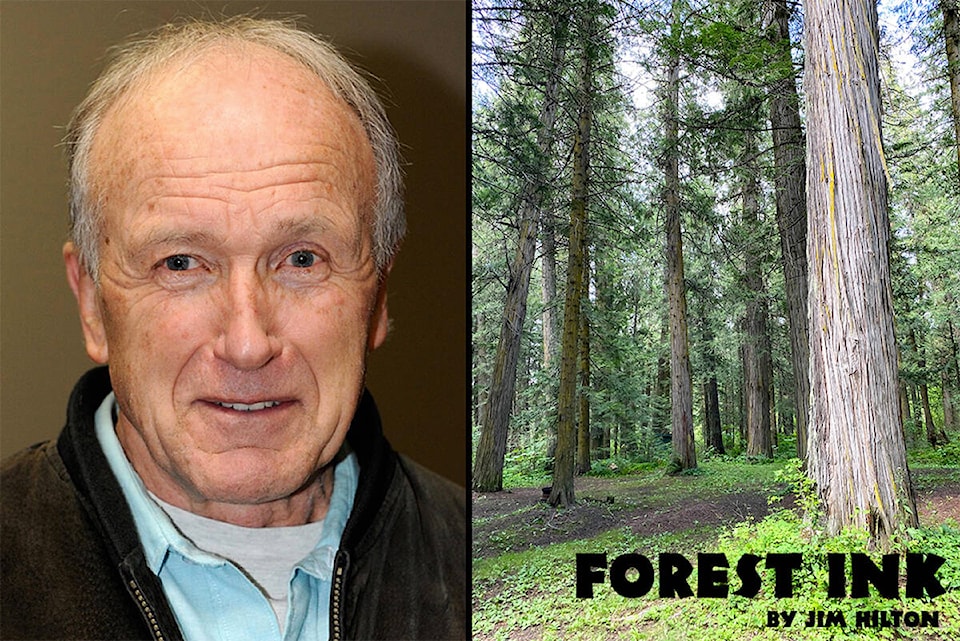The following information is from the Nov. 9 issue of Tree Frog News entitled “Forest Management in Finland –Learnings for BC Forestry” by lead author Cam Brown, local Ken Day and eight other participants of the trip this fall.
I discussed some of the basic comparisons of B.C. and Finland forests in an August 2023 article but this report provides some important differences such as Finlands “extensive private land ownership, greater resolution of Indigenous ownership, more homogeneous ecosystems, gentle topography, extensive road and bio-energy infrastructure. In Finland, almost 60 per cent of forested land is owned privately, with 660,000 private landowners who own on average 32 hectares. Twenty per cent of Finns over 20 years old own forested land. The forest industry owns nine per cent and the government manages the remaining forest land, mostly located in parks and northern Finland through a state-owned agency. “
The large amount of privately owned forest may seem too extreme to B.C. residents who are used to lots of crown land to recreate on but in Finnish policy, Every Person’s Right, “allows everyone access to private lands for hiking, berry picking and recreation which helps support a positive societal view of forest lands. The culture appears biased toward ‘active forest management’ outside of national parks. There is visible difference between the forests in Finland’s parks and those in general private ownership.” It is the differences in the management of their forests that we should take a close look at.
Finland has a long history of intensive and sustainable forest management in their boreal forests and maintains a robust timber supply using a range of silvicultural tools such as thinning, small scale final felling, and continuous cover forestry. While these practices have provided the country extensive benefits, the Finns acknowledged concerns around biodiversity (e.g. a lack of dead wood, snags and coarse woody debris) in intensively managed stands. Striking the right balance between timber production and ecosystem management is being approached using research, data, monitoring, and a continuous improvement cycle.” The authors describe how Finland’s forests cover 22.8 million hectares and support a harvest level of approximately 75 million m3/year of primarily Norway spruce, Scots pine, and Silver birch. The total volume of wood and carbon stored in the forest has been increasing since the 1970s where as in B.C. this may not be the case with our recent record-breaking wild fires. In Finland approximately 13 per cent of the forest falls in protected areas. A significant diversity in stands types were observed by the authors while travelling across the landscape (different species mixes, vertical layers, and stand ages).
The following are the authors ideas for implementation in BC:
“1. Develop a focused and coherent Forest Strategy that articulates BC’s vision and goals of
linking First Nations values, resilient forests, and a world class forest sector.
2. Create detailed forest inventories using LiDAR data, an extensive plot network, and expertise in remote sensing/data science/forest inventory. Ensure this information is made publicly available and updated continuously in the future.
3. Incent investment and innovation by identifying a subset of our forested landbase to be managed intensively to support high value timber objectives through clear long term strategies, predictability, and cost recognition by the land owner. Ensuring a full rotation management is key.
4. Create best practices guides for intensive forest management by ecosystem/stand types. This would include optimal densities at various stand ages and suggested timings for various treatments (cleaning, thinning, regeneration cut). Implement training for foresters to use the guides.
5. Develop approaches to incent increased utilization of all biomass at the time of primary harvest where it is economically reasonable to do so (e.g., intensive forest management zone).
6. Implement community heating systems for communities to create new markets for small diameter
logs from thinnings and fuel treatments.
7. Develop a training school for specialized harvesting equipment operators that can support implementation of thinning for fuel reduction treatments, selection harvest in IDF stands, visually sensitive areas, constrained areas, etc.”
The authors suggest that many short-term wins can be achieved in B.C. simply by increasing thinning across a range of forests to enhance multiple values. More online.
